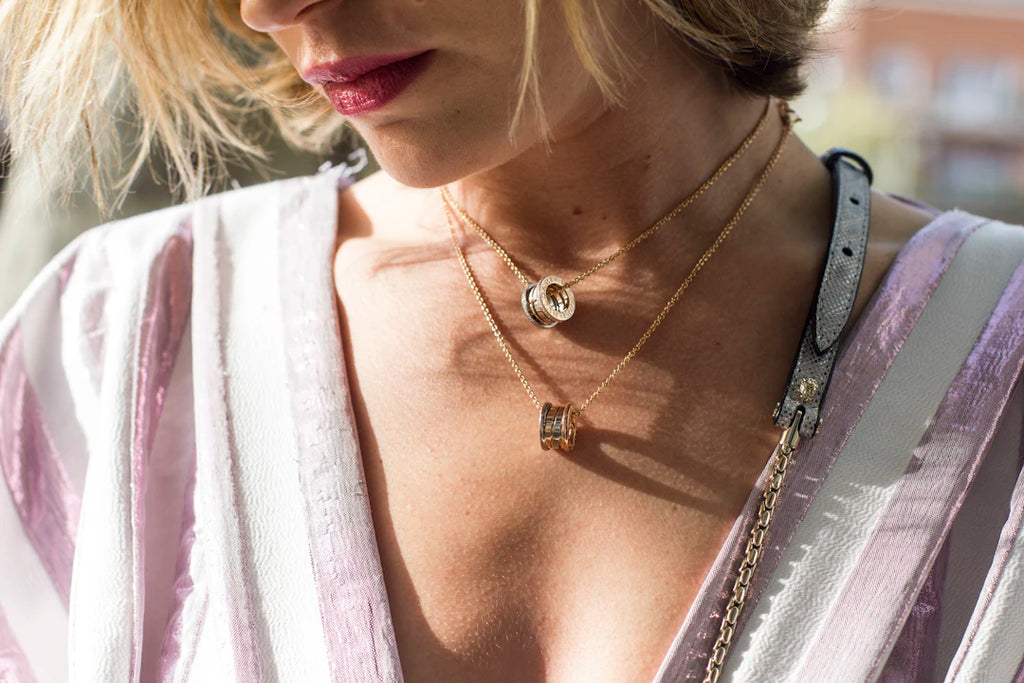The Timeless Allure of Gold and Silver Jewelry

Frequently Asked Questions
1. What is the historical significance of gold and silver jewelry?
2. When did the creation of jewelry first begin?
3. How did the ancient Egyptians view gold jewelry?
4. What were some jewelry trends during the Renaissance?
5. What role does sustainability play in modern jewelry making?
Jewelry has been an integral part of human culture for thousands of years, serving as a symbol of status, beauty, and craftsmanship. Two of the most treasured materials in the world of adornment are gold and silver. These metals have not only found their way into our hearts but also shaped the course of history through their enthralling stories. In this article, we will take a captivating journey through the ages, exploring the rich history of gold and silver jewelry and their significance in various cultures. As we uncover the historical evolution, we'll also touch upon modern trends, including how specific styles can complement outfits like the popular white cherry dress for girls.
Ancient Beginnings: The Dawn of Jewelry Making
The history of gold and silver jewelry dates back to ancient civilizations. The earliest known evidence of jewelry creation can be traced back to around 25,000 B.C., with the discovery of shell beads in modern-day Italy. However, it was in the ancient Egyptian civilization, around 3000 B.C., that jewelry made from gold began to emerge extensively. Gold, often associated with sunlight and immortality, held profound significance for the Egyptians, being reserved for royalty and deities.
The Egyptians and Gold Jewelry
Egyptians crafted intricate gold jewelry adorned with gemstones and enamels that were not only visually stunning but also laden with spiritual meanings. The famous burial treasures of Tutankhamun showcased gold collars, bracelets, and rings adorned with intricate designs, symbolizing power and protection in the afterlife. This lavish use of gold would set the precedent for centuries to come.
The Rise of Silver in Ancient Civilizations
While gold often received the spotlight, silver also enjoyed a rich history. The ancient Greeks and Romans valued silver for its beauty and workability. By the time of the Roman Empire, silver became accessible to the middle classes, allowing a broader segment of society to embrace its allure.
Silver in Greek and Roman Culture
In Greece, silver was often transformed into elegant jewelry pieces such as earrings, brooches, and diadems. They commonly used intricate techniques such as filigree and granulation, setting the foundation for many modern-day jewelry-making methods. In Rome, silver was used to create not only jewelry but also household items, portraying a duality of function and beauty.
The Middle Ages: A Shift in Jewelry Trends
As we entered the Middle Ages, jewelry took on a more utilitarian role in many societies. Nevertheless, gold and silver continued to play a critical part in personal adornment. The use of gemstones became prevalent during this period, with both gold and silver pieces being intricately set with colorful stones. The rise of Christianity also had a profound effect on the design and meaning of jewelry, as religious symbols emerged in various forms.
Symbolism and the Art of Crafting
During the Middle Ages, craftsmen began to respond to the growing demand for religious artifacts. Chalices, crosses, and rings adorned with precious metals became widespread among the clergy and the faithful alike. In this era, jewelry was not merely decorative; it became a representation of faith and devotion. The art of combining gold and silver with colored enamel also blossomed, giving rise to works of stunning complexity.
The Renaissance: A Rebirth of Sophistication
The Renaissance brought about a renewed interest in art, culture, and aesthetics. This period marked a significant turning point in jewelry design. Both gold and silver were used to create breathtaking pieces that showcased human emotion, nature, and myth. Fine details, intricate carvings, and the introduction of new techniques made jewelry during the Renaissance a true representation of human craftsmanship.
Influence of Royalty
Royal courts became essential centers for the celebration of jewelry. The extravagant jewelry worn by royalty inspired artisans across Europe. As gold and silver became symbols of wealth and power, they were often gifted during marriages and significant alliances. Moreover, this era saw the popularity of certain styles that continue to be celebrated today, including pendants and brooches, which can serve as charming accessories with looks like the white cherry dress for girls.
The Age of Enlightenment and Beyond
With the Age of Enlightenment came a surge in creativity and individuality, reflected in the world of jewelry. During this time, jewelry became more personal, serving as a means of self-expression. The advent of new gemstones and techniques further broadened the possibilities for artisans, allowing for unique and personalized designs.
Victorian Era: A Personal Touch
In the Victorian era, jewelry underwent significant transformations, driven by personal sentiment and fashion. The introduction of mourning jewelry became a trend, with pieces made of jet, onyx, and sometimes gold and silver. Jewelry became more than just an accessory; it became a relic of love and loss. Lockets holding pictures of loved ones also became popular, connecting the past with the present.
The 20th Century: Modernism and Artisan Influence
The early 20th century ushered in a new wave of design philosophy with the Art Nouveau and Art Deco movements. Jewelry saw a shift towards artistic expression and abstract designs, moving away from traditional forms. Gold and silver pieces started to incorporate geometric shapes and bold lines, reflecting the modernist ideals of the time.
Impact of Global Influences
As the world became more interconnected, global design influences also found their way into the realm of jewelry. Techniques and styles from Asia, Africa, and Latin America began to enrich the jewelry landscape, leading to an eclectic blend of designs that resonated with diverse audiences. This era championed the idea that jewelry is not solely about aesthetics; it is also a reflection of cultural heritage.
Jewelry in the Contemporary Era
Today, gold and silver jewelry remains highly coveted and versatile. As we find ourselves in an age of sustainability and ethical practices, many artisans are now focusing on responsible sourcing and crafting methods. The modern jewelry consumer shows a growing interest in unique and handmade pieces, often leaning towards minimalism and personalization.
Innovative Designs for a Modern World
Jewelry today is influenced by fashion trends and personal styles. For instance, pairing delicate gold or silver pieces with outfits like the charming white cherry dress for girls creates a stunning visual harmony. Whether it’s layering necklaces or opting for statement earrings, the right pieces can elevate any attire, making accessories an essential component of daily fashion.
Future Trends in Gold and Silver Jewelry
Looking ahead, gold and silver jewelry will undoubtedly continue to evolve. Innovations in technology, such as 3D printing, are paving the way for new designs that might not have been possible before. Additionally, the growing conversation around sustainability is likely to shape future collections, with more consumers seeking eco-friendly options.
A Legacy of Beauty and Craftsmanship
The history of gold and silver jewelry is rich and multifaceted, woven into the very fabric of human existence. From ancient civilizations to contemporary creations, these precious metals have served as timeless symbols of art, culture, and personal expression. As we adorn ourselves with pieces steeped in history, we not only appreciate their beauty but also the stories behind them. With an eye toward the future, we carry this legacy forward, celebrating the craftsmanship that defines each unique piece.
Explore the enchanting world of gold and silver jewelry, and let their beauty tell your story—where history meets modern elegance.
Check out another user's Shopify or Wix store by clicking this store link. Note that this is a promotional link, and we assume no liability for the content of the linked store.

Leave a comment